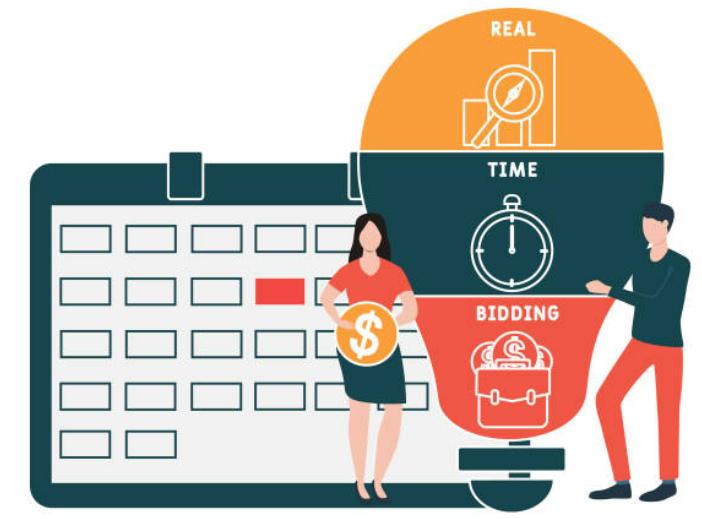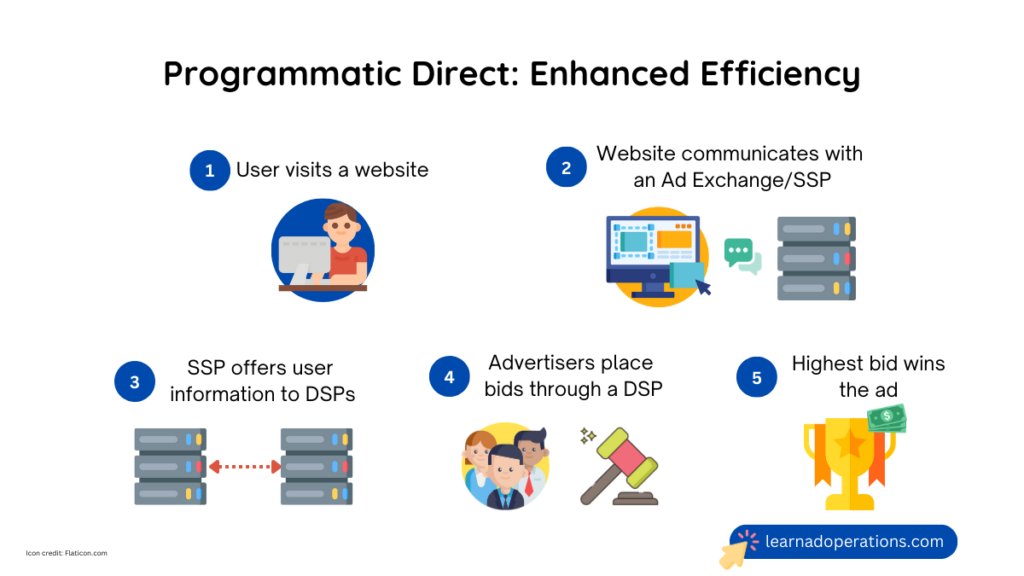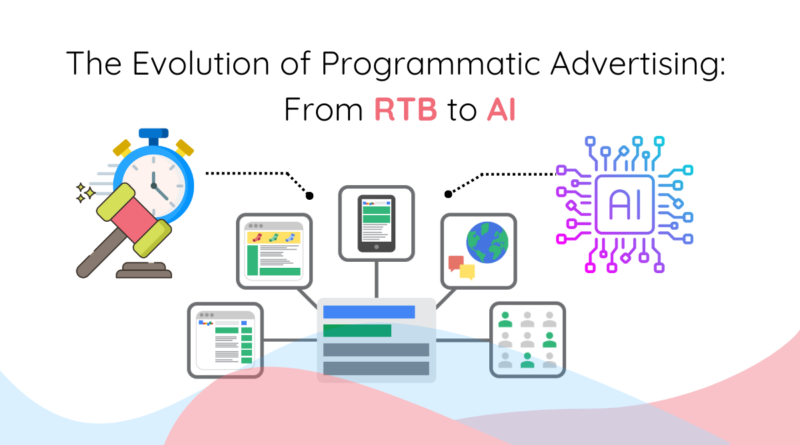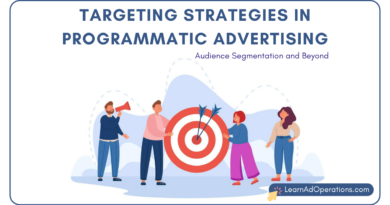The Evolution of Programmatic Advertising: From RTB to AI
Programmatic advertising transformed the way advertisers buy the desired inventory to run their ads. This automated and data driven technology enables the advertisers to reach their targeted audience with the accuracy and efficiency. In this blog post, we will explore the journey of programmatic advertising from the early stages of Real Time Bidding (RTB) to the most advanced technology Artificial Intelligence (AI), sharing real-world case studies along with examples to understand better.
Introduction to Programmatic Advertising
Programmatic advertising is an automated way of buying and selling of online ad inventory. Unlike traditional advertising methods, which often involve manual interventions and fixed pricing, programmatic adverting leverages technology to streamline the process, transacts in real-time and efficient way. The foundation of Programmatic advertising lies in Real Time Bidding (RTB), a technology that transforms online advertising by allowing advertisers to bid for an ad impression in real-time.
Real Time Bidding (RTB): The Game Changer

Real Time Bidding (RTB) develops around 2009 and primarily changed the landscape of online advertising. RTB create a platform for advertisers to bid for each impression in real time when users load the webpages. RTB ensures that the right ad is shown to the right user the at the right time by maximizing the relevancy and effectiveness.
For an example, if the user is searing for a running shoe, an advertiser who are selling sports gears can bid to show their ad to the user. The advertiser who bids the highest bid will win the auction and advertise the products at that moment. RTB technology not only improves the targeting but also optimizes the ad spend. The advertisers only pay for the impressions that suits to their products.
Programmatic Direct: Enhanced Efficiency

While RTB opens new doors, it wasn’t an end of story in online advertising. Programmatic Direct grew as a complementary approach by allowing the advertisers to buy guaranteed ad impressions without bidding before it goes for open auction. This approach combines the efficiency of programmatic advertising with the assurance of premium inventory and placement to the advertisers.
For an example, a major beauty product launching a new product, the advertiser might use programmatic direct to secure the premium inventory on the relevant and popular beauty products websites on priority. It ensures that the newly launched beaty product ads will serve on the top of the page ad units when the targeted audiences are visiting the website. It encourages the relevant users to redirect to the newly launched product page to know more about the product and purchase as needed.
The Role of Data Management Platforms (DMPs)
As programmatic advertising evolved, the necessity of Data Management Platform (DMPs) became crucial to manage the audience data. DMPs gather, analyse and activate the large set of audience data to help advertisers to target the desired audience. DMPs refine the data according to the requirement and personalize the audiences to achieve the advertising goals.
For example, an eCommerce brand uses the DMP to analyse the shopping behaviour of their customers and create the audiences to cater all the requirements of their advertisers. The refined audience can be targeted with users who are likely purchase the products. These types of refined audiences can help the eCommerce brand to increase the engagement and improve the conversions.
The Rise of Private Marketplaces (PMPs)
Private marketplace (PMP) is another noteworthy development in programmatic advertising landscape. PMP offers a precise environment where publishers invite selected advertisers to participate in the premium inventory auction. This approach combines the programmatic advertising efficiency with the exclusivity of direct deals.
A leading example is The New York Times uses PMP to offer its high-quality content and engaged readers to selected advertisers. PMPs ensures that both the parties benefit from a more curated advertising experience.
Artificial Intelligence (AI): The Next Frontier
The latest development in programmatic advertising is the integration of Artificial Intelligence (AI). AI helps to enhance all the aspects of programmatic advertising from audience segmentation to real time optimization of the ad campaigns.
AI modules analyze the large set of data to predict the user behavior and automate the decision making to ensure that the ads are shown to the right audience at the right time with minimal human interventions.
Google’s Smart Bidding, an AI driven bidding strategy is a prime example to quote here. It uses machine learning (ML) to optimize the bids for each auction, considering various signals like device, location, time of the day to maximize the conversion rate. This AI driven smart bidding technology has significantly improved the Return on Investment (ROI) for many advertisers.
Real Life Examples of AI in Programmatic Advertising
AI has a significant impact on managing the programmatic campaigns with lesser human interventions. One of the examples is Nike’s “Breaking2” campaign. Nike used AI to target ads based on users’ browsing and purchase history in their ad campaigns. The campaigns have delivered personalized content that significantly increased engagement and sales to achieve their advertising goals.
Likewise, The Economist leveraged AI to identify and target the potential subscribers who were most likely to engage with their content. This effort has increased 10% conversions and 70% reduction in cost per acquisition.
Are you interested to learn Programmatic Advertising? We have been publishing many articles on the programmatic advertising from basics to understand better. Here’s a link visit and learn programmatic advertising.
The future of Programmatic Advertising
The programmatic advertising looks promising as AI is continued to transform to cater both the advertiser and publisher requirements. We can expect more granular level of targeting, responsive ad formats and unified integration across all channels including mobile, video, and connected TV to reach the targeted audiences.
Currently, AI is focusing on dynamic and personalized ads based on the user behavior to improve the conversion in real-time. The personalized ads are relevant and engaging to drive the better results from the ad campaigns.
A few related articles to learn Programmatic Advertising from beginning!
- Introduction to Programmatic Advertising: A Beginner’s Guide
- The Role of Ad Exchanges and SSPs in Programmatic Advertising
- The Role of DSPs and DMPs in Programmatic Advertising
Conclusion
The evolution of programmatic advertising from RTB to AI has evolved the online advertising landscape by offering efficient and effective ways to reach the targeted audience. By adopting the new technologies, advertisers can setup the effective ad campaigns and optimize effectively to reach the advertising goals. As a digital marketer, keep learning new technologies and adopting them while creating the campaigns helps to yield the better results. For beginners in online advertising, grasping these concepts and staying up-to-date with the latest trends will be essential for mastering the programmatic advertising and driving successful campaigns in the future.




